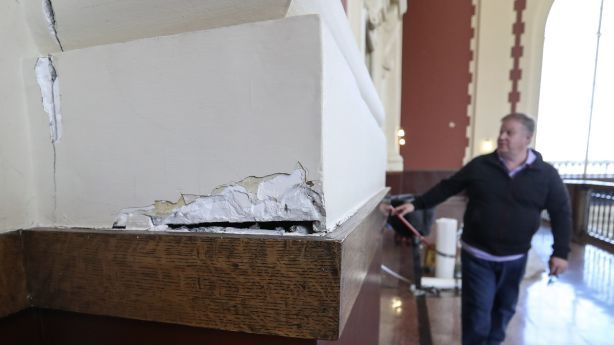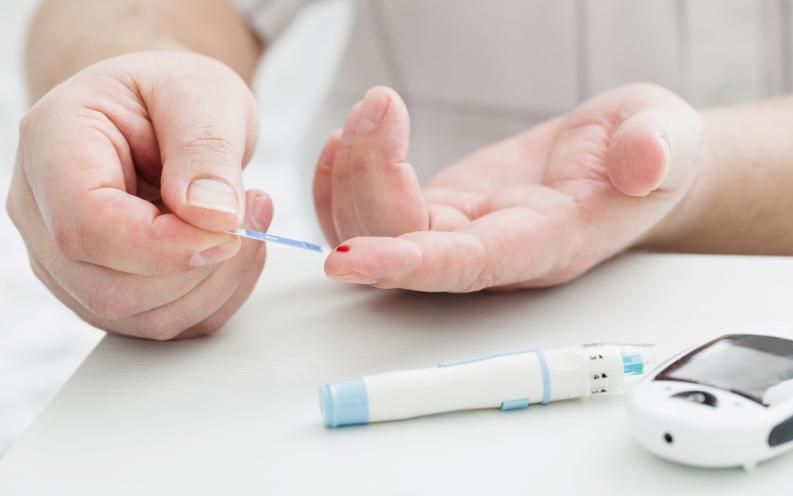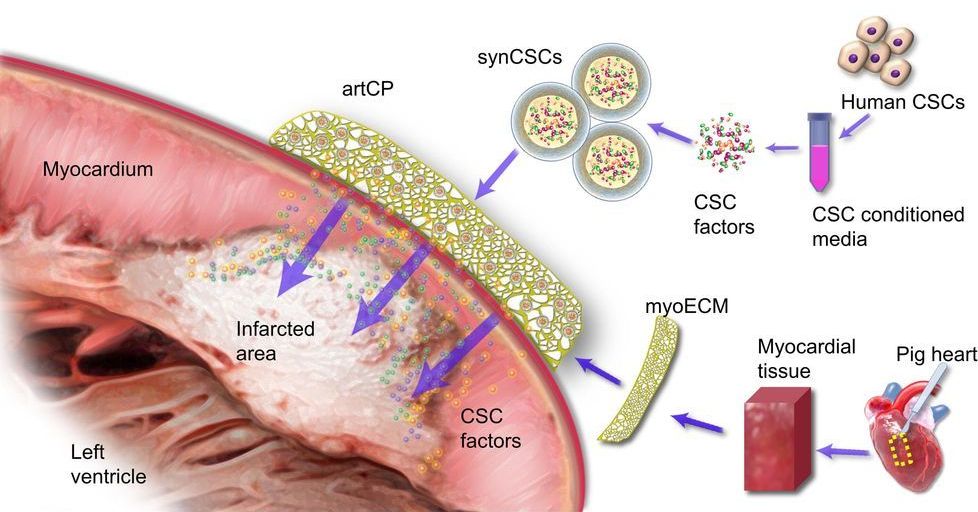Perhaps one day we will transcend our biological limitations and be more like mutants or aliens?
Entra para leer el articulo completo.


The group of patients received the anti-viral drug remdesivir as part of a compassionate use’’ trial, not a double-blind placebo-controlled trial which would offer more definitive evidence.
Two ampuls of remdesivir are pictured during a news conference at the University Hospital Eppendorf (UKE) in Hamburg, April 8, 2020, as the spread of coronavirus disease (covid-19) continues. Ulrich Perrey/Pool via REUTERS (Pool/Reuters)By Christopher Rowland Christopher RowlandBusiness reporter foc…

Fresh air, sunlight and improvised face masks seemed to work a century ago; and they might help us now.
By Richard Hobday
When new, virulent diseases emerge, such SARS and Covid-19, the race begins to find new vaccines and treatments for those affected. As the current crisis unfolds, governments are enforcing quarantine and isolation, and public gatherings are being discouraged. Health officials took the same approach 100 years ago, when influenza was spreading around the world. The results were mixed. But records from the 1918 pandemic suggest one technique for dealing with influenza — little-known today — was effective. Some hard-won experience from the greatest pandemic in recorded history could help us in the weeks and months ahead.

DARPA is planning to develop a travel adapter for the human body. Called the ADvanced Acclimation and Protection Tool for Environmental Readiness (ADAPTER), the new program aims to produce an implantable or ingestible bioelectronic device to help soldiers handle jet lag and diarrhea.
Anyone who has traveled extensively knows that jet lag and diarrhea are not jokes. Jet lag and other sleep-cycle disruptions such as shift work can impair alertness and athletic performance, and cause disorientation, fatigue, indigestion, irritability, insomnia, and excessive sleepiness. Meanwhile, travel diarrhea can produce symptoms that range from unpleasant to severe.
This is bad enough for tourists or business people, but for soldiers jet lag and diarrhea can be a real hindrance as hundreds or even thousands of soldiers can be deployed to the other side of the world at a moment’s notice, only to end up running so far ahead of the logistical chain that they have to rely on local food and water instead of standard military rations. The end result is soldiers impaired by disrupted sleep cycles or requiring medical attention for intestinal problems as a result of consuming contaminated food and water.

At Samsung, we have a long tradition of supporting the health and vitality of our communities. Our company and our employees have generously given to schools, charitable causes and local institutions to address hometown needs across the United States. Our philosophy is simple – our business and employees thrive when our partners and communities thrive.
With nearly 20,000 employees spread across the U.S., our top priority remains to keep them and their families healthy and safe during this unprecedented time. This extends to the communities in which they call home.
Since the onset of COVID-19, we have worked to supply Samsung products and technology to aid frontline healthcare workers in local hospitals across New York and New Jersey. To assist school systems with their transition to remote learning, we have built on the 10 years of our Solve for Tomorrow program by expediting the delivery of nearly $3 million in technology and supplies to local schools across the country. We continue to support consumers with round-the-clock care at Samsung.com and have extended our product warranties for those impacted by COVID-19.

SALT LAKE CITY — Officials are still tallying, but the path of destruction left behind by last month’s 5.7 magnitude earthquake is racking up tens of millions of dollars in damage.
So far in Salt Lake County, inspectors have found the quake has damaged 107 government buildings — including dozens of schools — with early estimated costs hitting the $48.5 million mark, according to Clint Mecham, Salt Lake County Emergency Management division chief.
That’s not a final total — and it doesn’t even include homes and businesses.
Venture capitalist Chamath Palihapitiya stunned CNBC anchor Scott Wapner and generated widespread applause on social media by declaring in a television interview Thursday that the U.S. government should let hedge funds and billionaire CEOs “get wiped out” by the coronavirus-induced economic collapse and instead focus its attention on rescuing Main Street.
When Wapner, seemingly incredulous at what he was hearing, asked Palihapitiya why he would support the collapse of large companies, the Social Capital CEO said “this is a lie that’s been purported by Wall Street.”
“When a company fails, it does not fire their employees, it goes through a packaged bankruptcy,” said Palihapitiya. “If anything what happens is the people who have the pensions inside the companies, the employees of these companies, end up owning more of the company. The people that get wiped out are the speculators that own the unsecured tranches of debt or the folks that own the equity. And by the way, those are the rules of the game. That’s right. These are the people that purport to be the most sophisticated investors in the world. They deserve to get wiped out.”

The Harvard University offshoot i20 Therapeutics is setting the goal of one day having those who suffer from diabetes to be able to treat it with pills rather than injections with a syringe when they need to take their medications.
Bioengineering researchers began to publish their methods in 2018 for turning liquid medications into encapsulated easy to swallow forms, which has demonstrated some early success with insulin in animal models.
Starting out with $4 million in seed money from Sanofi Ventures and the Juvenile Diabetes Research Foundation’s T1D Fund, i20 Therapeutics plans to take that technology to GLP1 analogs, these are the glucagon like peptides that help to maintain blood sugar levels; i20 is focused on creating the next generation of oral peptide and protein based therapies.

A drug used for cancer therapy has shown promise in reversing kidney damage caused by systemic lupus erythematosus (SLE, or lupus), according to a Yale-led study published April 8 in the journal Science Translational Medicine.
“Kidney damage affects about half of the patients with lupus, sometimes leading to renal failure with a requirement for dialysis or transplantation,” said Joe Craft, the Paul B. Beeson Professor of Medicine (rheumatology) and professor of immunobiology. “Finding what causes that damage is extremely important.”
Lupus is an autoimmune disease in which immune cells attack tissues in the body of the host, with kidneys being particularly susceptible in a condition called lupus nephritis. In lupus nephritis, the patient’s own T cells infiltrate kidney tissue and trigger a decrease in oxygen, leading to tissue damage and potentially end-stage kidney disease.

Researchers from North Carolina State University have developed an “off-the-shelf” artificial cardiac patch that can deliver cardiac cell-derived healing factors directly to the site of heart attack injury. In a rat model of heart attack, the freezable, cell-free patch improved recovery. The researchers also found similar effects in a pilot study involving a pig model of heart attack.
Cardiac patches are being studied as a promising future option for delivering cell therapy directly to the site of heart attack injury. However, current cardiac patches are fragile, costly, time-consuming to prepare and, since they use live cellular material, increase risks of tumor formation and arrhythmia.
“We have developed an artificial cardiac patch that can potentially solve the problems associated with using live cells, yet still deliver effective cell therapy to the site of injury,” says Ke Cheng, Randall B. Terry, Jr. Distinguished Professor in Regenerative Medicine at NC State’s College of Veterinary Medicine and professor in the NC State/UNC Joint Department of Biomedical Engineering.